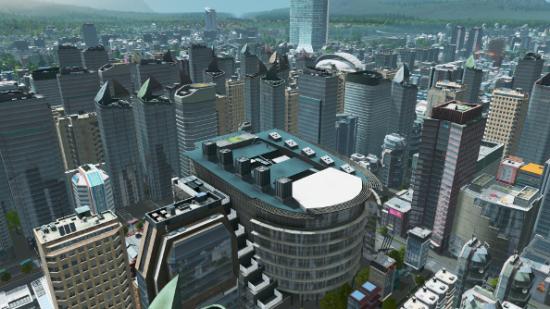Cities: Skylines is walking into a slightly gloomy landscape. The city-builder genre is mostly a desert, punctuated only occasionally by flashes of creativity. Even Maxis has fallen by the wayside, shut down, leaving behind the disappointing SimCity.
Forget all of that. Skylines is an elixir concocted by Finnish alchemists, made from all the ingredients that a great city-builder needs. I’ve been kept up again and again, fashioning my urban utopias, and when I do sleep, I’m haunted by roundabouts and sewage pipes.
Want more Cities: Skylines? Here are the best Cities: Skylines mods.
In early 2013, I played a preview build of Cities in Motion 2, the previous game developed by Skylines dev, Colossal Order. Ostensibly, it’s a game about running a transport company and making it a successful business. Underneath that, though, is a game where every resource at the player’s disposal goes into keeping the blood flowing through the arteries of a city.
Each stretch of road, every bus stop, every link in the transport network is important, and even small changes can have meaningful results. As I fiddled around with the game for the first time, trying to get an old lady to use my bus, I started to wonder what a full-on city-builder developed with this eye for detail and this obsession with the veins that fuel cities would look like.
It looks like Cities: Skylines.
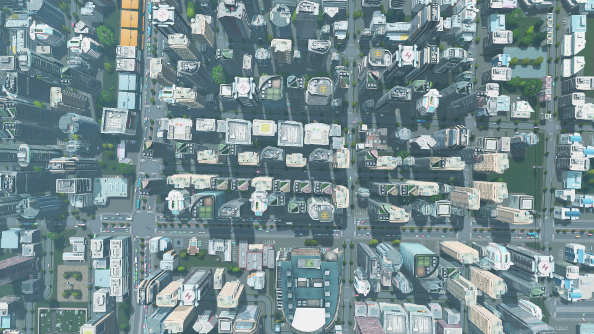
Everything in Skylines starts with a road. The very first thing you do is drag out that first stretch of tarmac from the highway, the first little piece of the city. Eventually that will connect up with elevated intersections, roundabouts, bridges and other roads both small and huge. Everything grows up around them.
After that first tiny bit of road construction, the city is ready to be built. With time and patience, anyway. Building it is like filling in the gaps between the roads. Residential, commercial and industrial zones can be painted next to them, or fine-tuned thanks to a zoning tool that allows you to customise the area by filling in the entire thing or painting each small square individually.
If there’s demand for the zones, people will move in quickly, and houses, shops and factories will spring out of the earth. A place to stay, a place to work and a place to shop — that’s three needs covered, but citizens need quite a bit more than that. They need electricity, water, waste disposal, healthcare and schools. Even when they die, they still need things. Well, they mainly need somewhere to go, like a cemetery or crematorium.
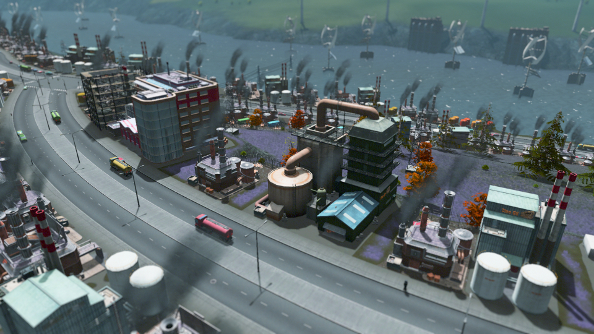
That equals a lot of management, but finding problem areas isn’t a chore. Icons appear over buildings where there’s a need going unmet or action that needs to be taken, while a big list of overlays can be applied, so you can spot trouble clearly. These start off simple. People want education, you build a school. There’s not enough electricity, you build a new wind turbine or power station. But as the city expands, the problems might remain the same, but the sources become more complex.
Usually, it all comes back to those roads that I keep going on about. If your citizens are wading in rubbish, then the obvious solution is build a new landfill or incinerator. That’s expensive, it will cause more unsightly, unhealthy pollution and it might not actually solve anything. Landfills send out trucks to pick up rubbish, but if the road system is a mess and there’s congestion everywhere, then they won’t be able to do their job effectively. Rubbish continues to mount, people leave, the city goes bankrupt.
Fiddling with the roads means that future won’t come to pass. Some one-way streets might help, or a roundabout to help the traffic flow into different streams. There’s certainly no dearth of options. When managing a metropolis, trying to figure out which option will work best is the tricky part.
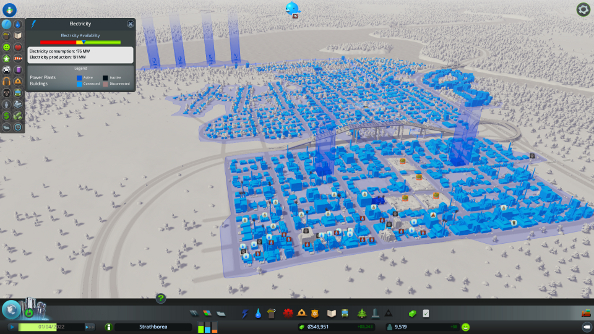
The flexibility of the road tool makes laying out a city intuitive, even when it’s challenging, as you try to make the absolute most out of the space. It’s surprisingly easy to make elaborate tarmac lattices, even if they might not be very effective roads. By toggling snapping off, you can get even more freedom, since the roads won’t automatically attempt to snap to a grid. A traffic overlay displays the most congested spots, then it’s just a matter deleting the old road and replacing it, or adding new routes.
All of that is a concern for a more experienced mayor, though. Skylines starts off slowly, teasing with the promise of something huge later on when you zoom out to look at all the plots of land. One plot in Skylines is the size of a SimCity town. There are nine plots in each city. It’s huge. But you only start off with a single plot.
New plots and new buildings, often advanced versions of earlier ones, unlock when the city reaches specific population milestones, providing a steady stream of new toys to play with. Special, usually massive, buildings unlock after different criterias have been met, like having a lot of commercial buildings. It stops mayors from blowing all of their cash on buildings that the city can’t support. A 1,000-person village doesn’t need an airport.
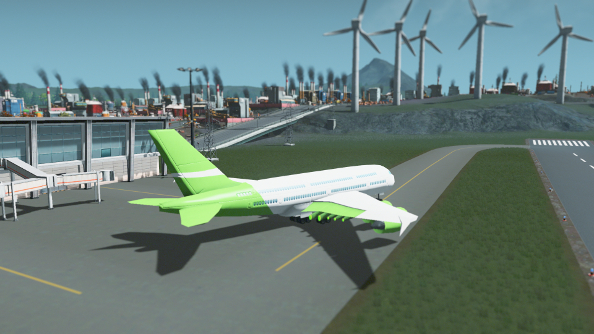
It’s when you hit the 8,000 mark that Skylines starts to let you really create a city. That’s when high density zones and offices can be laid out. More people get squashed into the same area, which means more traffic and more pressure on services. But by then, there’s a foundation that can support it because the suburbs and industrial areas have already been developed.
When a city is managed well, it evolves. Residential, commercial and industrial zones with high land value, where the citizens have all of their needs met, essentially level up. They become shrouded in scaffolding, and when it comes down, a bigger, spiffier building stands in its place. Placing zones helps a city expand out the way, but taking care of the people in those buildings is what makes the city grow upward.
No matter what size, Skyline’s buildings are attractive, detailed models, sitting somewhere between SimCity’s cartoon aesthetic, and Cities XXL’s more realistic one. You can zoom in close to street level, and watch the crowds swarm around buildings and the reflections on the grocery store windows.
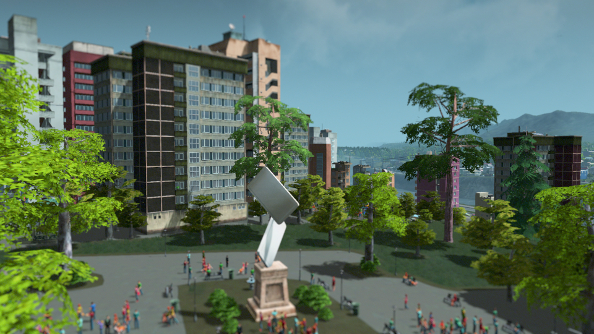
Placed buildings, like police stations or hospitals, are not as upwardly mobile as the ones that sprout up in zoned areas. They are what they are, and they can’t be upgraded. The expansion of buildings was one of SimCity’s few good ideas, and it’s a much more effective way of dealing with a larger population than slapping down a new police station. There is still, however, an alternative. Increasing the budget for a specific service effectively expands its range, possibly necessitating a bit of juggling if money is tight.
This micromanagement, obsessively making sure every overlay is showing blue and not red, tweaking taxes and the budget, takes up half of the game after the population breaks into the tens of thousands. But it can all be broken up into more manageable chunks through the district tool.
Sanity-saving districts can be painted anywhere on unlocked plots, and the area within the district can be tweaked with policies and specifications that set it apart from the rest of the city. If there’s a particularly miserable suburb with a crime problem, legalising marijuana can cheer everyone up while reducing crime. It increases tax income, to boot. The downside is that everyone starts posting weed puns on the game’s Twitter analogue. #JointTaskForce.
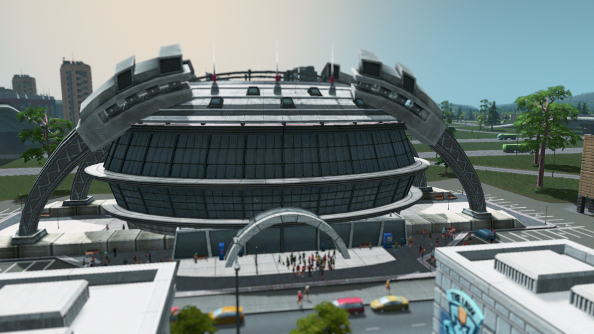
Specialised districts are where industry gets a bit interesting. Natural resources can be found dotted around the map, like oil or wood, and exploiting that resource requires specific types of industry. Paint over a forest and then set it as a forestry district, and any industry in that area will transform into tree nurseries and other green industry, which makes people who don’t have an abiding fear and hatred of trees quite happy.
The tool stops cities from becoming homogenised and generic, instead inspiring mayors to craft specialised areas, putting a city together from these diverse districts. Since new plots get unlocked long before the city needs more space, Skylines encourages the creation of smaller, mostly independent towns that eventually collide, creating a metropolis.
SimCity-style disasters don’t threaten this metropolis, but building and managing a city still has its fair share of pitfalls. Crappy mayors make people leave, abandoning their homes and jobs. It might be due to unemployment, or perhaps you cut the power to a whole district just to see what happens. Maybe you simply plonked down a dam and flooded the whole neighbourhood. That’s your business. Just as it’s my business that I made a whole town eat poo for a year.
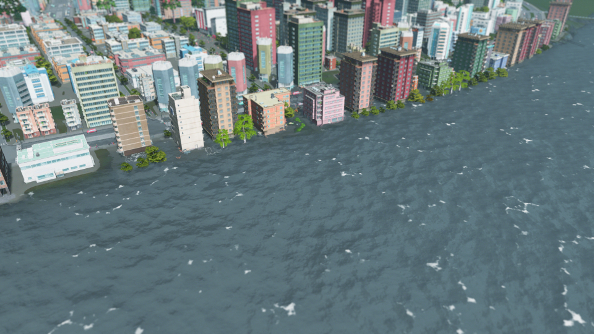
It’s certainly possible to bugger up a city so royally that it seems like there’s no hope. I did exactly that for a video. But it always feels like Skylines is on your side. When a good thing happens, the results are often instantaneous. When a bad thing happens, it takes time to see the effect. You still know it’s coming, though. It just takes a while for people to get so pissed off that they pack up their life and move to a new city with a better mayor.
In that gap between the problem arising and people fleeing, there’s time to catch a breath and make new plans. Infinite amounts of time since, you know, you can just pause the game. Scrapping entire chunks of a city and rebuilding roads and services –while expensive –is a completely viable response to a big problem. And the negative effects of all this restructuring won’t have time to gain a foothold if the spot of redecorating is effective.
Those moments where everything is going to hell and entire neighbourhoods have become ghost towns are what I’ve started to live for when playing Skylines. It’s all frantic hunts through menus and statistics, trying to find a way to save a buck, to keep the city ticking over, to buy myself just enough time. I can fix it. It’s totally fixable.
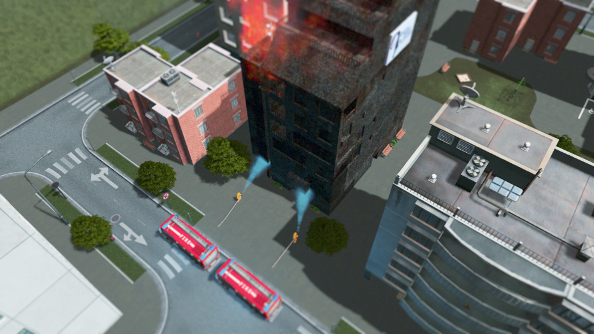
The clean UI belies the wealth of information found behind it, the graphs and charts, sliders and buttons. You can go really far down the rabbit hole and start stalking individual citizens, following them home and watching them go to work. You can even name them. In fact you can customise the name of every person (and animal), as well as their homes, cars and places of work. And then stalk them.
Playing with all that information fosters obsession, especially when the shit is hitting the fan so much that there is nothing left that isn’t just dripping in shit. Literally. This is exactly what happens when you ignore sewage. And even when things are going well, it requires a lot of restraint to not just start tweaking a dozen different things.
It’s perfected the art of devouring whole days, but there’s plenty of room to grow. As I write this review, before the game’s official launch, this is already being taken care of in the Steam Workshop. Skylines isn’t out yet, but already modders have built new homes, a cathedral and some elaborate intersections.

Some free updates are in the works, too, which will include tunnels. At the moment, roads can’t go under hills, which is something that roads are normally happy to do, under the right circumstances. The current absence of tunnels might also explain why the nine maps and their nine plots are all so very dull and flat. Impressive cities can be crafted, but the landscape isn’t very inspiring. They’re all very featureless. There are three different climates, but mostly the differences are in the shade of green that covers the whole map.
There are hints of small concessions being made because of the budget and team size, I think. The same buildings appearing a bit too often, the lack of bridge variety, the dull maps –the mod support and map editor is crucial to filling in those gaps. It just needs motivated modders. New assets can be imported, while an editor opens up the in-game assets for tweaking, so there’s no lack of modding potential. It’s already great, but a dedicated community could build on that.
Cities: Skylines is absolutely the best city-builder I’ve played since SimCity 4. From macro to micro, from the sprawling transport networks and city-wide policies to the fine-tuned districts and street-level detail, it impresses. Its size and flexibility creates a fertile space for experimentation, making each new map, or even each new plot, a place to try out new plans for a hyper-efficient green utopia, filthy industrial powerhouse or anything in between.
